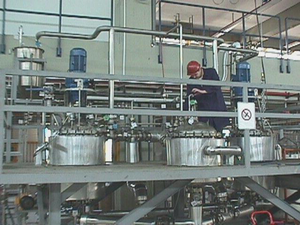 The global production of plastics increases continuously as a result of their unique properties that make them suitable for a vast number of applications, form very specialized to multipurpose and from single, short-term to long term ones. As a consequence, waste plastics also increase and engineers face the challenge to develop efficient and economical recycling processes.
The Selective Dissolution/Precipitation technique for plastics separation and recycling is a very promising technology that can be applied to various types of plastic waste and has already some industrial applications. The procedure is as follows: the mixture of polymers is separated using different solvents and/or conditions to successively dissolve one polymer of the mixture at a time. The dissolved plastic is recovered from the solution using several precipitation techniques, such as addition of a non-solvent, cooling, solvent evaporation, etc. The advantage of this technique is that it yields pure polymers with quality similar to that of the virgin ones.
Selective Dissolution/Precipitation using a non-solvent for polymer separation has been one of the research areas of our group both theoretically (phase equilibrium in polymer solutions) and experimentally. In the framework of a European funded project, TTPL has developed a pilot scale unit for the separation of plastic waste contained in municipal solid waste, and proved the technological and economic efficiency of the process.
The global production of plastics increases continuously as a result of their unique properties that make them suitable for a vast number of applications, form very specialized to multipurpose and from single, short-term to long term ones. As a consequence, waste plastics also increase and engineers face the challenge to develop efficient and economical recycling processes.
The Selective Dissolution/Precipitation technique for plastics separation and recycling is a very promising technology that can be applied to various types of plastic waste and has already some industrial applications. The procedure is as follows: the mixture of polymers is separated using different solvents and/or conditions to successively dissolve one polymer of the mixture at a time. The dissolved plastic is recovered from the solution using several precipitation techniques, such as addition of a non-solvent, cooling, solvent evaporation, etc. The advantage of this technique is that it yields pure polymers with quality similar to that of the virgin ones.
Selective Dissolution/Precipitation using a non-solvent for polymer separation has been one of the research areas of our group both theoretically (phase equilibrium in polymer solutions) and experimentally. In the framework of a European funded project, TTPL has developed a pilot scale unit for the separation of plastic waste contained in municipal solid waste, and proved the technological and economic efficiency of the process.
Selected publications
- Pappa G.D., Boukouvalas Ch., Giannaris K., Ntaras N., Zographos V., Magoulas K., Lygeros A., Tassios D.,"The Selective Dissolution/Precipitation technique for polymer recycling: A Pilot Unit Application", Conservation, Resources & Recycling, 34(1), 2001, 33-44.

